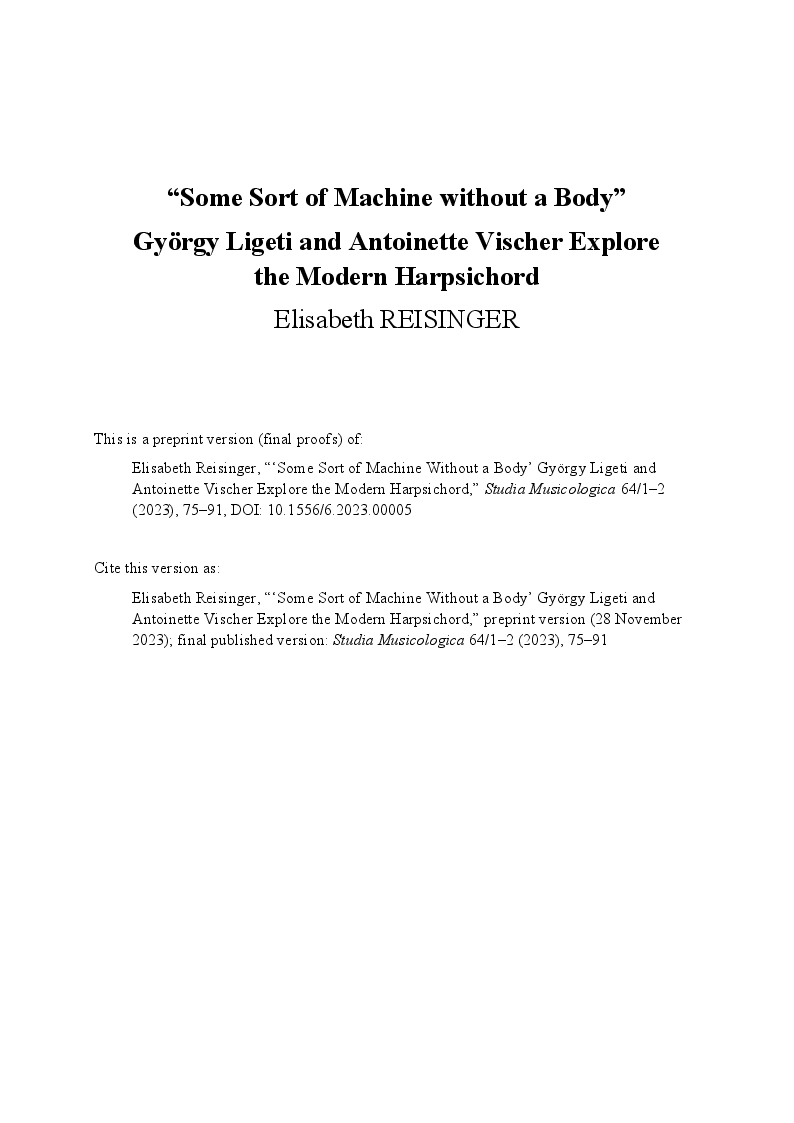
‘Some Sort of Machine Without a Body’
György Ligeti and Antoinette Vischer Explore the Modern Harpsichord
1bdf3385-8d4d-4072-a2d8-8515f6ad3572
Abstract (English)
From the mid-1950s, Basel harpsichordist Antoinette Vischer (1909–1973) promoted the harpsichord as a modern instrument, commissioning numerous composers to contribute to a new repertoire. To this end, she turned to György Ligeti, who completed Continuum for her in 1968. The composer had already used the harpsichord in ensembles several times, but now he had to think about it in a soloistic function for the first time, starting from a specific performer with her specific instrument. In this paper, I focus on this relationship between composer, performer-commissioner, and instrument, drawing primarily on the correspondence between Ligeti and Vischer preserved at the Paul Sacher Foundation in Basel. These unpublished letters document their collaboration and how both negotiated their artistic positions and aesthetic concepts of the harpsichord as “some sort of machine.” An in-depth analysis of Ligeti and Vischer's exchange about the instrument's peculiarities and performance issues allows us to better understand their self-conception as artists and their ideas of “modernity.” Furthermore, this case study sheds light on a specific period in the history of an instrument that through the efforts of performers like Vischer was transformed from an artifact of the past to an emblem of the present.




